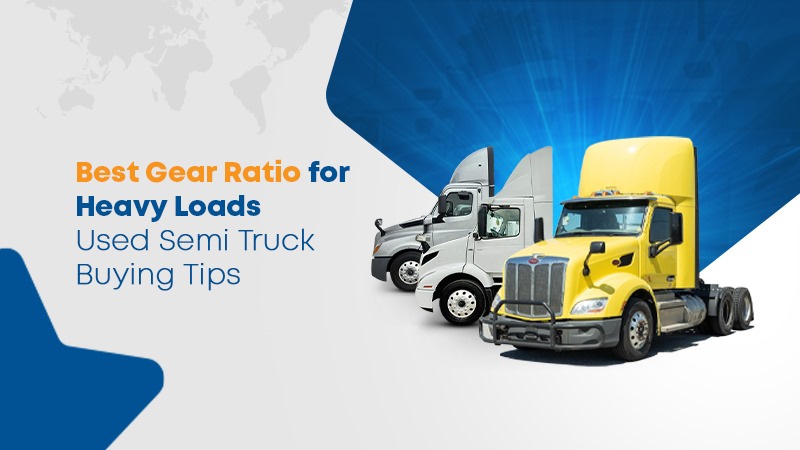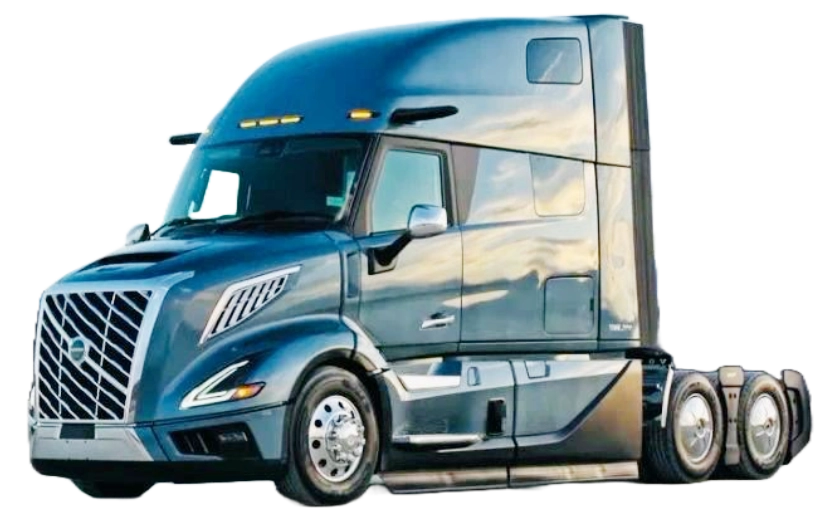Best Gear Ratio Trucks for Sale in Ontario [Used Freightliners & Volvos]

Best Gear Ratio for Heavy Loads in Semi Trucks
If you're shopping for a semi-truck in Canada and plan to haul heavy freight, gear ratio is one of the most important specs to consider. It affects how your truck handles hills, starts from a stop, and maintains highway speed — especially when fully loaded.
But the truck itself is only part of the equation. Your axle ratio, engine, and transmission must work together to deliver the performance you need. Here’s everything you need to know about gear ratios for hauling heavy loads in Canadian conditions.
What Is Gear Ratio on a Semi Truck?
The gear ratio is the number of times the driveshaft turns for each full rotation of the wheels. For example, a 4.11:1 gear ratio means the driveshaft turns 4.11 times to make the wheels turn once.
-
Higher gear ratios (e.g., 4.10) = more torque. Great for heavy loads and hills but usually burn more fuel.
-
Lower gear ratios (e.g., 2.64) = better fuel economy and higher top speeds, but less torque.
Why it matters:
-
Pulling Power: How much torque your truck can deliver for heavy loads
-
Performance: Your truck’s top speed and acceleration
-
Fuel Efficiency: RPM and fuel use at cruising speeds
Best Gear Ratios for Hauling Heavy Loads
You might’ve heard:
“Go with a 3.73, it’s a safe bet,” or “2.64 saves fuel on the highway.”
But if you're pulling heavy freight — especially in mixed or hilly terrain — you don’t want to go too low.
| Gear Ratio | Best For |
|---|---|
| 3.73 to 4.10 | Excellent torque. Ideal for heavy loads and hilly or mixed terrain across Canada. |
| 3.55 | Versatile option for both city and highway routes. A common pick for owner-operators. |
| 2.64 to 2.85 | Best for dry van or reefer loads on flat highways with fuel efficiency as the main goal. |
How to Choose the Right Gear Ratio for Your Semi Truck
-
Analyze Your Load + Route: Haul heavy freight across hilly Ontario or Quebec? Choose a higher ratio. Long, flat prairie runs? Go lower.
-
Check OEM Guidance: Match the gear ratio to your truck’s engine and transmission recommendations.
-
Don’t Under-Spec: Don’t pick a low ratio just to save fuel if you regularly haul heavy loads — your engine will strain.
-
Think Resale: Versatile gear ratios (like 3.55) attract more buyers when reselling your truck.
-
Use a Calculator: Try our free tool to model different gear ratios based on tire size, RPM, and cruising speed.
Which Semi Trucks Handle Heavy Loads Best?
Any modern Class 8 truck — Kenworth T880, Peterbilt 389, Freightliner Cascadia, Volvo VNL — can handle heavy loads if properly spec’d.
But the right gear ratio + engine + transmission combo is what makes a truck perform efficiently.
A strong truck with the wrong gear ratio for your routes across Canada will still feel underpowered or inefficient.
Can You Change Your Truck’s Gear Ratio?
Yes — but it’s a major job.
You’ll need to:
-
Swap the differential gears
-
Recalibrate the ECM and speedometer
-
Possibly update other driveline parts
Cost: $3,000 to $6,000+
Unless you’re doing a full build or overhaul, it’s better to buy a truck already geared for your work.
How to Find a Semi Truck’s Gear Ratio (When Buying Used)
If you're checking a used truck, here are three options:
-
Check the Axle Tag or Differential Label
Stamped or printed near the rear axle. -
Look at the Build Sheet or Owner’s Manual
Some manufacturers list gear specs in their build documentation. -
Manual Method
Remove the differential cover and divide ring gear teeth by pinion gear teeth (e.g., 37 ÷ 9 = 4.11 gear ratio).
Try Our Gear Ratio Calculator (Free Tool)
Not sure which ratio is best for your routes?
Use our RPM-to-Speed Calculator to test different gear ratios. It’ll show how changes affect performance and fuel economy based on your setup.
Here’s how:
-
Enter your expected RPM, tire diameter, overdrive ratio, and gear ratio.
-
Instantly see the speed output (MPH).
-
Adjust the gear ratio to find the best balance of power and efficiency.
Try the Gear Ratio Calculator Now
Need Help Choosing the Right Truck or Gear Ratio?
It’s easy to get caught up in specs — but at the end of the day, you want a truck that pulls steady, drives smooth, and keeps your operating costs low.
If you’re not sure which gear ratio is right for your type of hauling in Canada, we’re here to help. Our team at Hi-Point Truck Sales works with owner-operators and fleets every day to match them with trucks that are ready to work — whether that’s climbing steep grades in Northern Ontario or maximizing fuel savings across the Prairies.
Have questions?
Reach out anytime — we’ll help you choose a used truck that’s spec’d right and geared to perform.
Click here to browse available units
FAQs About Semi Truck Gear Ratios
Q: What’s the best gear ratio for hauling heavy loads?
A: A gear ratio of 3.73 or higher provides better pulling power and torque — especially for hilly or mixed-terrain routes across Canada.
Q: What's the most fuel-efficient gear ratio?
A: Gear ratios between 2.64 and 3.25 are typically the most fuel-efficient for flat routes and lighter loads.
Q: What’s the most versatile gear ratio?
A: 3.55 — it balances power and economy and works well across various terrains. Common in fleet and multi-purpose trucks.
Q: Can I improve MPG by changing my gear ratio?
A: Yes — but it depends on your haul, route, and current setup. ROI is best for high-mileage trucks where the gear mismatch is costing efficiency.
Q: Does tire size affect my effective gear ratio?
A: Yes. Larger tires = lower effective gear ratio (lower RPM at same speed). Always consider tire size when calculating.
Q: Will changing my gear ratio affect my warranty?
A: Possibly. Always check with your truck’s manufacturer or dealer before making mechanical changes.
Want a truck with the right gear ratio for your routes?
Call us at 866-766-8484 or browse our inspected inventory here.

